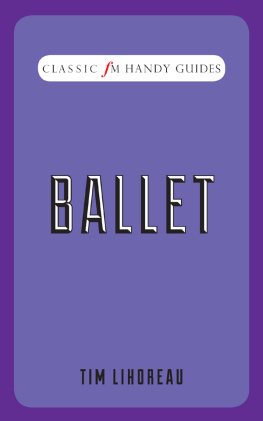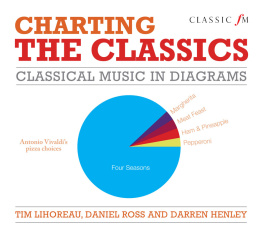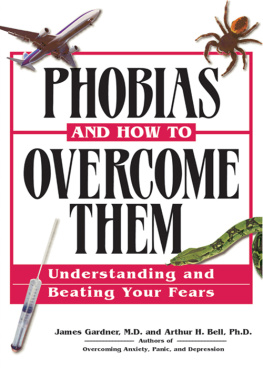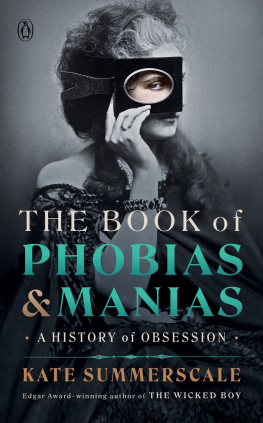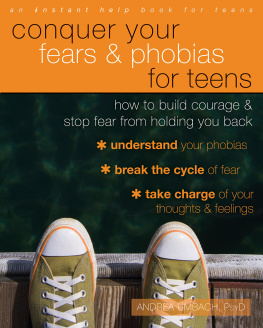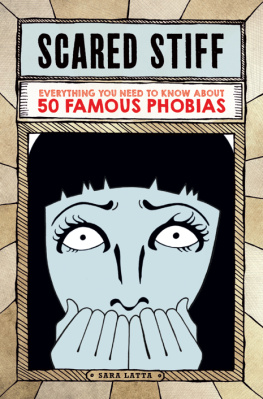Modern Phobias
A Litany of Contemporary Fears
Tim Lihoreau

For Siobhan, for enduring and accepting my phobias these last fifteen years
Fronsophobia was the first to strike.
I remember the occasion vividly. It was Christmas 1977, and the last vestiges of silvery jubilation were being wrung out of a particularly halcyon year. Looking back on it now, life showed every sign of simply getting better and better, until what should have been a golden Christmas morning suddenly turned cold with fear. After moistened kisses had been parried and traditional Irish coffee sunk, I was charged with making tea for three aunts, one uncle, two neighbours, parents and assorted hangers-on. A manageable group to some, perhaps, but in no time I was gripped by fronsophobia. I was never the same again. In my late teens I realised that I was also agmenophobic, but it was only when acute versurphobia kicked in, in my twenties, that I decided to make it my months work to , fear of country music.) Where possible I have tried to give the reader further reading material, albeit totally fictitious, and on occasion Ive attempted to give solace to sufferers by pointing out any famous patients. Chronic nimitempophobia prevents me from saying any more.
Tim Lihoreau
2006
Being A Fake Doctor, I am often asked, Fake Doctor, are the Modern Phobias in this book real? Of course, my answer is invariably variable: Yes and no. That is to say, perhaps, but maybe not. You see, I think it possible that there is not a single person to whom at least one of these Modern Phobias, somewhere in this book, does not apply. For example, who can honestly say they have not, at some time in their life, felt a creeping feeling that something may not be quite right as they approach the cash point towards the end of the month? (See .) Which man amongst us can put his hand on his pants and say that his eyes have never widened due to the first stirrings that lead to subturrophobia? Even I, with all my years of fake medical experience, have been known to treat certain imaginary patients differently due to my illenomophobic tendencies.
In public life, too, I fear there are many folk suffering from all manner of Modern Phobias. Many of Stephen Frys friends, for example, have openly admitted to being aliacallophobes. Lourdes Ciccone is said to be a paremusophobe. Thankfully, though, some celebrities do manage to overcome their fears George Michael is certainly no longer a forlatriphobe.
In everyday life, however, there are still taboos surrounding many of these fears. Very few people will acknowledge that they are abcellophobic or amipartophobic, and yet fake doctors estimate that one in five of the population are chronic sufferers; most UK males are either bulliphobic or illerogophobic, or both; and in our working lives, antefamaphobia is thought to account for many thousands of lost man hours. The figure rises to millions in politics.
As with most afflicted folk, sufferers of Modern Phobias deserve nothing if not your sympathy.
A Fake Doctor
August 2006
fear of leaving a toilet cubicle
Forced underground in the Victorian era largely due to Queen Victorias refusal to acknowledge that toilets existed only the swinging sixties (with flower power) and the sad seventies (with Toilet Duck) enabled abcellophobia to break free from its taboo. Contemporary abcellophobes usually find symptoms occur when, already en compartement, they hear their boss enter. A raging desire for anonymity (as one sufferer puts it) sees them prepared to remain in the cubicle for as long as it takes their path to clear. For many, the fear of having to own up to the vile stench keeps them there. If they are lucky enough to escape the loo but meet their boss outside, some feel the need to make endless small talk rather than emit the career-damaging line, Id give it ten minutes..
[orig. der.: ab, away from; cellula, little room; strictus, tight; cultus, buttocks; adlevia, lifting; nasus, nose; fulvus, brown]


fear of having missed ones stop
The fleeting nature of abemoraphobia leads some doctors to place it dismissively in the same dubious medical category as acupuncture, long-term backache and the acting in Holby City. A minority of sufferers have abemoraphobia interdiu, which causes a queasy welling-up in the stomach and, occasionally, a panic-fuelled mad dash to the train/bus door. Far more common is abemoraphobia nocturnia, which afflicts already fatigued travellers eager for sleep on late trains. Victims of a.n. suffer from a malfunctioning of the internal body clock, which appears to press its own snooze button. Thus the a.n. sufferer will wake up with a snort just after the train has pulled into each station, then make a Jacques Tati-esque, windmill lunge for their briefcase before realising it is not their stop. They will continue to do this every seven minutes or so, as the train pulls into each successive station. In 90 per cent of cases, faulty body clocks seem to repair themselves just before the sufferers intended stop, enabling them to get some much-needed sleep. All the way to the terminus.
[orig. der.: aberrare, to go astray; mora, delay; interdiu, by day; nocturnus, by night]

fear of builders
Like rusmusophobia (q.v.) and vendomophobia (q.v.), aedificatorphobia is erroneously thought to be one of the friendly fears, on the grounds that, if you fear your builders, you must be quite sane. Whatever the ins and out of it, doctors say aedificatorphobia is definitely on the increase. Most sufferers fail to realise they have the phobia until too late. They think they are immune, that their builder is more of a friend (and its just a coincidence that his name is Jerry). He was able to quote them for virtually everything they wanted done. Turns out his firm not only does the structural building work; it also does tiling, plastering, repointing, landscape gardening, re-turfing, fencing, quantity surveying, pest control, getting stones out of horses hooves and solving global warming. Everything. How lucky you were to find them. Of course, thats when the Herbert Lom twitch begins to develop. Symptoms? Well, symptoms include a tendency to live amongst rubble, to communicate via a third party and, sadly, the ability to sit through the O Reilly Builders episode of Fawlty Towers without laughing once.
[orig. der.: aedificator, builder]

fear of summer
To anyone smaller than a size 16 (women) or 36 waist (men), the whole concept of aestaphobia must be alien. For them, summer is eagerly anticipated, longed for even. Global warming? Its a good thing, surely. Well, for an aestaphobe, summer is akin to a tenth level of hell which Dante forgot to write up. Sufferers divide into two groups: those with aestaphobia titubens and those with


